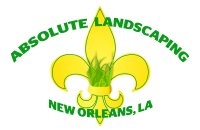Bottlebrush
Description: Bottlebrush (Callistemon spp.) is an evergreen shrub or small tree known for its distinctive, bright red, cylindrical flower spikes that resemble a bottle brush. The flowers, which appear from late spring to summer, attract hummingbirds and other pollinators. Bottlebrush typically grows to a height of 6-12 feet with a spread of 6-8 feet, making it an excellent choice for garden beds, borders, and as a specimen plant.

Growth Habit: Bottlebrush has an upright, rounded growth habit with arching branches and narrow, lance-shaped leaves. Its moderate to fast growth rate and striking flower spikes make it ideal for creating focal points in the garden.
Light Requirements: Bottlebrush thrives in full sun. It performs best with at least 6-8 hours of direct sunlight daily, which promotes vigorous growth and abundant flowering. It can tolerate partial shade, but flowering may be reduced.
Watering Needs: Regular watering is essential, especially during the establishment period. Bottlebrush prefers well-drained soil and is drought-tolerant once established. It benefits from occasional deep watering during prolonged dry spells.
Soil Preferences: Bottlebrush prefers well-drained, fertile soil rich in organic matter. It can adapt to a variety of soil types, including sandy, loamy, and clay soils, provided there is good drainage. Amending the soil with compost can improve soil structure and fertility.
Temperature Tolerance: Bottlebrush is suitable for USDA hardiness zones 8-11. It thrives in warm climates and can tolerate heat and humidity. In regions prone to colder temperatures, some winter protection may be necessary to prevent damage.
Uses: Ideal for adding color and texture to garden beds, borders, and foundation plantings, Bottlebrush is also perfect for use as a specimen plant, in mass plantings, and as a small tree in landscape designs. Its showy flowers and dense foliage make it a versatile choice for both formal and informal garden settings.
Additional Notes: Bottlebrush requires minimal maintenance. Pruning can be done after flowering to maintain shape and size and encourage more prolific blooming. It benefits from an annual application of a balanced fertilizer in early spring. Bottlebrush is generally pest-resistant and low-maintenance, making it a reliable choice for various landscaping needs. Regular monitoring and appropriate treatments can help keep the plants healthy and thriving.
